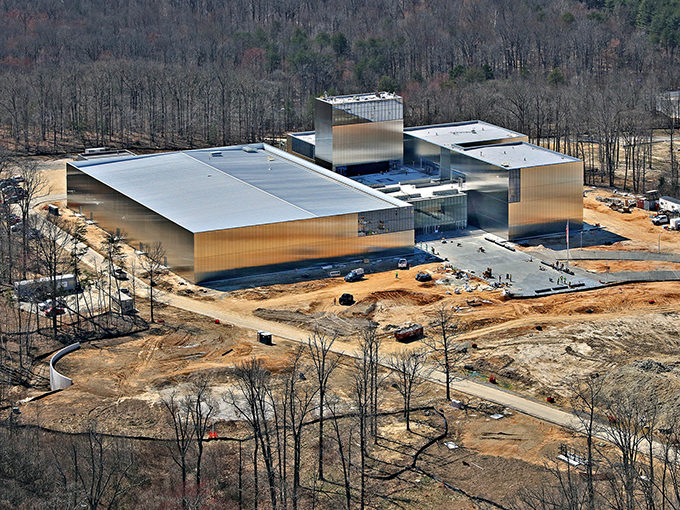
The National Museum of the United States Army, designed by Skidmore, Owings & Merrill LLP (SOM), has been awarded LEED® Silver certification from the U.S. Green Building Council (USGBC). LEED®, or Leadership in Energy and Environmental Design, is the most widely used green building rating system in the world, and is a globally recognized symbol for sustainable achievement.
“One of our primary goals in the design process,” said SOM Director Kristopher Takács, “was to reduce the overall carbon impact of the new museum while creating a high performance building that expressed the storied principles of the Army. We are thrilled that this goal has been realized.”
Scheduled to open on June 4th, 2020, the National Museum of the United States Army will be the first national museum to tell the story of America’s oldest military service, from its earliest days as the colonial militia to its present-day status as the world’s most powerful ground force. Designed to serve as the Army’s symbolic front door, the museum will become a center for education and inspiration, and a cultural institution of national significance.
“Our partners at SOM did a magnificent job helping us envision a museum that would reflect the Army’s storied history, its values, and the service of the 30 million men and women who have worn its uniform,” said LTG Roger Schultz, USA (Ret.), president of the Army Historical Foundation. “SOM’s ability to produce such an impressive design while ensuring the museum is also green and sustainable is a credit to their team and representative of our shared values.” The Army Historical Foundation teamed with SOM on the project as part of the foundation’s ongoing campaign to construct the museum.
USGBC awarded the museum a silver rating through the LEED® New Construction v2.2 Rating System, which is based on its utilization of sustainable features such as radiant heating and cooling, increased insulation, improved glazing, high-efficiency LED lighting, automatic daylighting controls and occupancy sensors, low-flow plumbing fixtures, and green roofs. The building is designed to achieve a 36.5% reduction in energy cost and a 43.2% reduction in water use over the respective LEED® baselines. Through an integrated, proactive approach towards sustainability, SOM has created a building that minimizes the use of energy and water, creates healthy spaces for visitors and employees, and engages actively with the outdoor environment.